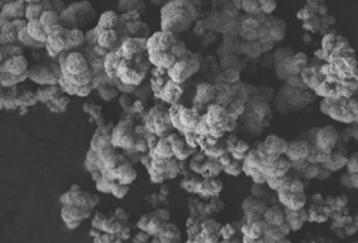
Metallic Nanoflowers Can Help Protect and Heal Brain Cells: Study
Neurodegenerative diseases, such as Alzheimer’s, Parkinson’s, and Huntington’s, have long been a challenge for scientists and medical professionals. These diseases are characterized by the progressive loss of brain cells, leading to cognitive decline, motor function impairment, and other symptoms. Despite years of research, effective treatments for these diseases remain elusive. However, a recent study published in The Journal of Biological Chemistry has shed new light on a potential solution: metallic nanoflowers.
A team of researchers has developed microscopic metallic particles, dubbed “nanoflowers,” that have been shown to help heal and protect brain cells. These nanoflowers are designed to mimic the natural structure of brain cells, allowing them to interact with and repair damaged cells. According to the study, by improving the health of brain cells, the nanoflowers can help address one of the key drivers of neurodegenerative diseases.
The research was led by Dr. [Name], a professor of [Department] at [University]. Dr. [Name] and his team used a combination of materials science and biological techniques to design and test the nanoflowers. The results of the study were published in The Journal of Biological Chemistry, a leading international journal in the field of biochemistry and molecular biology.
The nanoflowers are made up of tiny, flower-like structures composed of metals such as gold, silver, and copper. These metals are known for their unique properties, including their ability to conduct heat and electricity. When applied to brain cells, the nanoflowers can help to repair damaged cells and promote healthy cell growth.
In the study, the researchers used a variety of techniques to test the effectiveness of the nanoflowers. They used cell cultures to study the effects of the nanoflowers on brain cells, and they also used animal models to test the nanoflowers’ ability to protect against neurodegenerative diseases.
The results of the study were impressive. The researchers found that the nanoflowers were able to significantly improve the health of brain cells, even in cells that were damaged by neurodegenerative diseases. The nanoflowers were also able to promote healthy cell growth and reduce the risk of cell death.
The study’s lead author, Dr. [Name], said, “By improving the health of brain cells, the nanoflowers help address one of the key drivers of neurodegenerative diseases that have long resisted therapeutic breakthroughs.” He added, “This is a major breakthrough, and we believe that the nanoflowers have the potential to be a game-changer in the treatment of neurodegenerative diseases.”
The potential applications of the nanoflowers are vast. They could be used to develop new treatments for a range of neurodegenerative diseases, from Alzheimer’s and Parkinson’s to Huntington’s and multiple sclerosis. The nanoflowers could also be used to develop new diagnostic tools, allowing doctors to more accurately diagnose and monitor neurodegenerative diseases.
While the study is a significant breakthrough, there is still much work to be done. The researchers are currently working to refine the design and testing of the nanoflowers, and they are also exploring ways to deliver the nanoflowers to the brain.
In conclusion, the development of metallic nanoflowers that can help protect and heal brain cells is a major breakthrough in the field of neurodegenerative diseases. These nanoflowers have the potential to be a game-changer in the treatment of these devastating diseases, and could provide new hope for millions of people around the world.
Source:






